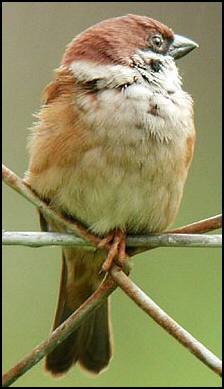Islamic Republic of Afghanistan

Birding Afghanistan
Afghanistan is a landlocked country that is located approximately in the center of Asia. It is variously designated as geographically located within Central Asia, South Asia, and the Middle East. It is bordered by Pakistan in the south and east, Iran in the south and west, Turkmenistan, Uzbekistan and Tajikistan in the north, and China in the far northeast. The name Afghanistan means the Land of Afghans.Afghanistan is a crossroads between the East and the West, and has been an ancient focal point of trade and migration. It has an important geostrategical location, connecting South and Central Asia and Middle East. During its long history, the land has seen various invaders and conquerors, while on the other hand, local entities invaded the surrounding vast regions to form their own empires.
Since the late 1970s Afghanistan has suffered continuous and brutal civil war, which included foreign interventions in the form of the 1979 Soviet invasion and the recent 2001 U.S.-led invasion that toppled the Taliban government. In late 2001 the United Nations Security Council authorized the creation of an International Security Assistance Force (ISAF). This force is composed of NATO troops that are involved in assisting the government of President Hamid Karzai in establishing the writ of law as well as rebuilding key infrastructures in the nation. In 2005, the United States and Afghanistan signed a strategic partnership agreement committing both nations to a long-term relationship. In the meantime, multi-billion US dollars have also been provided by the international community for the reconstruction of the country.
Afghanistan is a landlocked and mountainous country in South-Central Asia, with plains in the north and southwest. The highest point is Nowshak, at 7,485 m (24,557 ft) above sea level. Large parts of the country are dry, and fresh water supplies are limited. The endorheic Sistan Basin is one of the driest regions in the world. Afghanistan has a continental climate with hot summers and cold winters. The country is frequently subject to minor earthquakes, mainly in the northeast of Hindu Kush mountain areas. Some 125 villages were damaged and 4000 people killed by the May 30, 1998 earthquake.At 249,984 sq mi (647,500 km²), Afghanistan is the world’s 41st-largest country (after Myanmar). Tajikistan, Turkmenistan and Uzbekistan border Afghanistan to the north, Iran to the west, Pakistan to the south and the People’s Republic of China to the east.
-
Wikipedia
GNU Free Documentation License
http://en.wikipedia.org/wiki/Afghanistan
-
Number of bird species: 460
(Estimate at December 2018)Because of the troubled situation there is little solid information on the current spread of species.
National Bird - Golden Eagle Aquila chrysaetos
Number of endemics: Afghan snowfinch (Pyrgilauda theresae
Afghan Snowfinch Pyrgilauda theresae
-
iGoTerra Checklist
iGoTerra ChecklistFatbirder Associate iGoTerra offers the most comprehensive and up to date birds lists on the web
-
Birds of Central Asia
| (Kazakhstan, Turkmenistan, Uzbekistan, Kyrgyzstan, Tajikistan & Afghanistan) | By Raffael Ayé, Manuel Schweizer & Tobias Roth | Christopher Helm | 2012 | Paperback | 336 pages, 141 plates with colour illustrations; 14 colour photos, 5 b/w illustrations, 3 colour maps, colour distribution maps | ISBN: 9780713670387 Buy this book from NHBS.com -
Reptiles and Amphibians of Afghanistan
| (A Field Guide for the FOB) | By John M Regan | John M Regan | 2016 | Paperback | 66 pages, colour photos | ISBN: 9780692859612 Buy this book from NHBS.com

